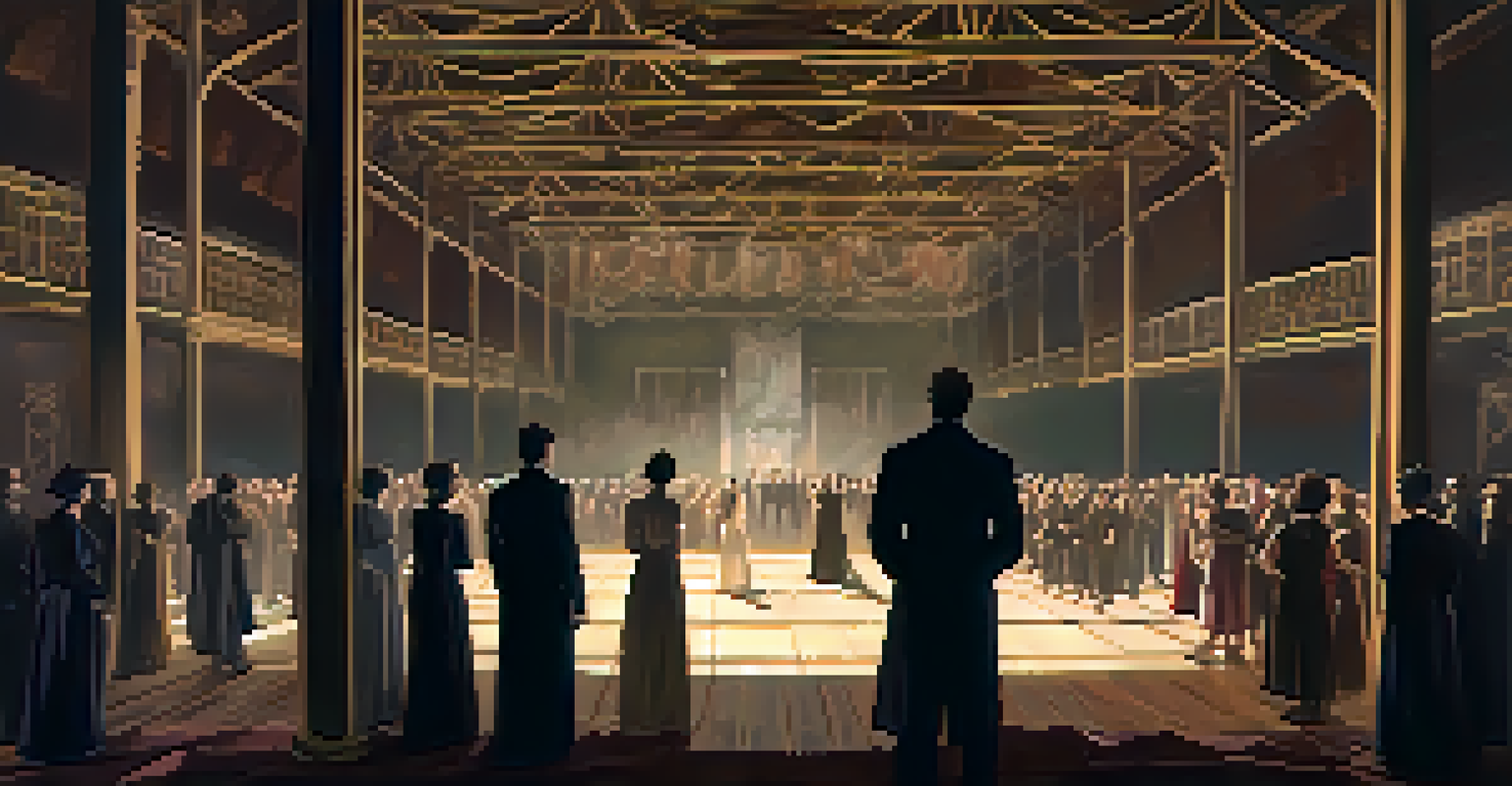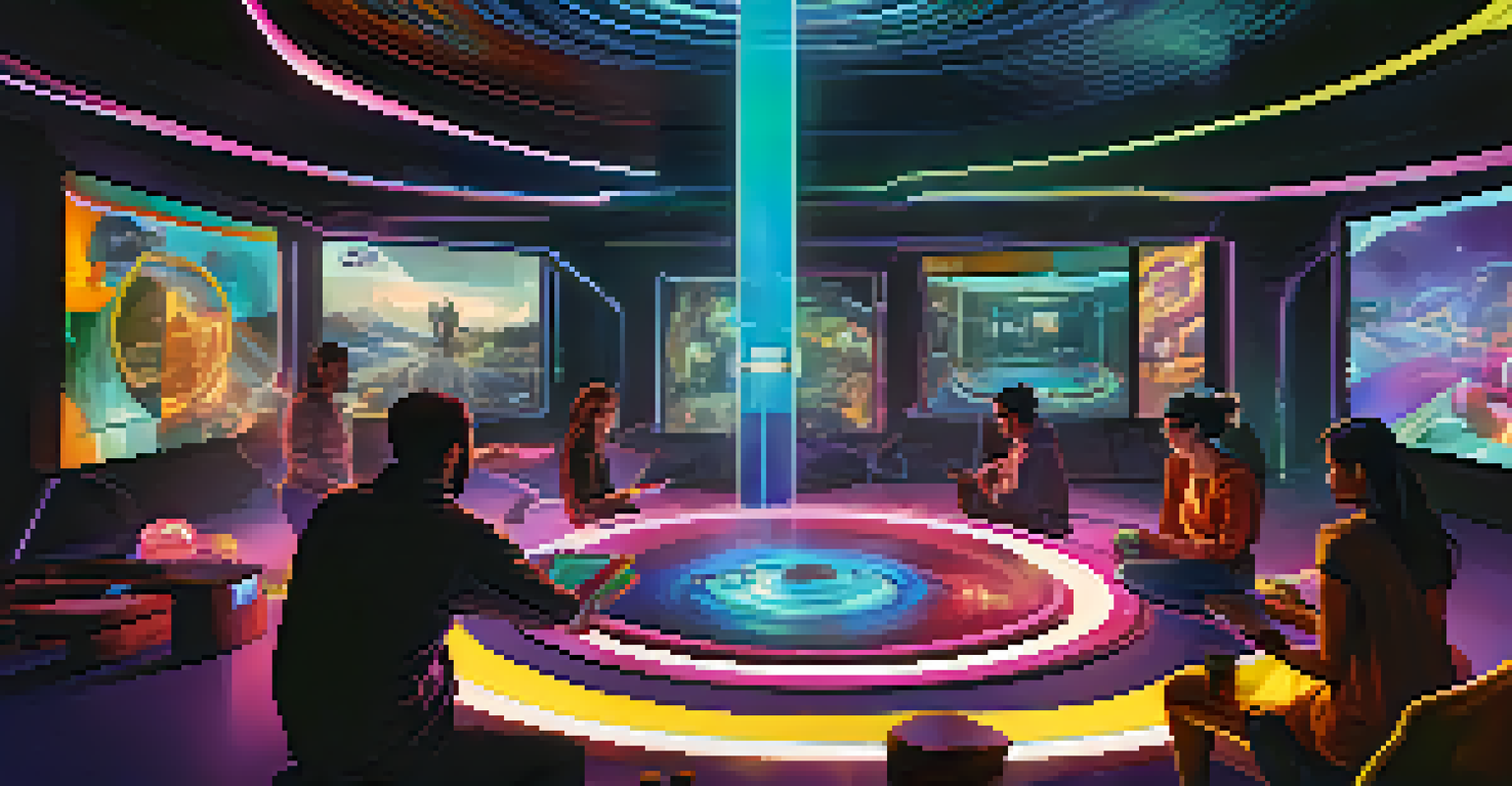Case Studies: Successful Immersive Cinema Projects Worldwide

The Rise of Immersive Cinema: A New Era of Storytelling
Immersive cinema is redefining how audiences experience films. Unlike traditional cinema, it invites viewers to engage with the story in a multi-sensory environment, often making them feel like part of the narrative. This shift is not just about technology; it’s about creating emotional connections that resonate deeply with viewers.
Cinema is a matter of what's in the frame and what's out, but it's also a matter of what's in the heart and what's out.
One example of this is the 'The Void' in various locations worldwide, where audiences step into a virtual reality space and interact with the environment and characters. These experiences allow fans to not just watch a film but live it. As immersive cinema grows, it reflects a broader trend towards more interactive and experiential entertainment.
With advancements in technology, such as VR and AR, immersive cinema is set to flourish. This evolution offers filmmakers new tools to tell their stories and engage audiences in ways that were once unimaginable. As we explore successful projects, it's clear that this genre is more than a trend; it’s transforming the entertainment landscape.
Case Study: 'The Lion King' Immersive Experience in London
One standout case study is the immersive adaptation of 'The Lion King' in London, which brought the beloved story to life in a uniquely engaging way. Audiences are not just spectators; they become part of the enchanting world of the African savanna. This experience combines live performances with stunning visuals and interactive elements that capture the essence of the original tale.

Participants are guided through different scenes, interacting with characters and feeling the vibrant energy of the story unfold around them. This approach fosters a deeper emotional connection to the characters and the narrative, enhancing the overall enjoyment of the classic story. It also allows for a fresh perspective, as returning fans discover new layers to the beloved tale.
Immersive Cinema Redefines Storytelling
This new genre engages audiences in multi-sensory environments, allowing them to feel part of the narrative.
The success of this project highlights the potential of immersive experiences to revitalize classic narratives. By blending tradition with innovation, it proves that audiences crave new ways to experience familiar stories. This case study sets a benchmark for future projects aiming to captivate and engage viewers on a profound level.
Case Study: 'Sleep No More' – A Theatrical Adventure
'Sleep No More' is a groundbreaking immersive theatre experience in New York City that brilliantly merges storytelling with a choose-your-own-adventure format. Set in a transformed warehouse, audiences roam freely through a hauntingly beautiful space, exploring scenes inspired by Shakespeare's 'Macbeth'. This format allows each viewer to create their own narrative journey, experiencing the story in a uniquely personal way.
The most successful artists are those who can adapt to their environment and innovate in ways that resonate with their audience.
The production encourages exploration, as attendees can follow different characters and uncover various plot points, leading to a different experience each time. This level of interactivity not only keeps audiences engaged but also fosters a sense of agency that traditional performances often lack. It’s like stepping into a living painting where every brushstroke tells part of the story.
By breaking the fourth wall and allowing viewers to interact with the performance, 'Sleep No More' pushes the boundaries of conventional theatre. Its success highlights how immersive experiences can transform storytelling, making it personal and participatory. This case study serves as a powerful example for future immersive cinema projects to consider audience engagement as a central element.
Case Study: 'The Immersive Game' – A Unique Blend of Film and Gaming
'The Immersive Game' is a unique project that combines elements of cinema and gaming, creating a hybrid experience for audiences. Participants are thrust into an interactive narrative where they make choices that influence the storyline. This level of involvement not only heightens engagement but also invites viewers to explore their own creativity within the cinematic world.
This project uses advanced technology, such as motion capture and interactive set designs, to create a seamless blend of reality and fiction. As players navigate through different scenarios, they encounter challenges that require problem-solving and teamwork, enhancing the social aspect of the experience. It's akin to stepping into your favorite video game, but with the emotional depth of an artful film.
Case Studies Showcase Success
Projects like 'The Lion King' and 'Sleep No More' highlight how immersive experiences can deepen emotional connections and enhance storytelling.
The success of 'The Immersive Game' shows the potential for immersive cinema to innovate and engage audiences in fresh ways. By merging gaming mechanics with storytelling, it opens up new avenues for filmmakers and creators. This case study exemplifies how immersive experiences can cater to diverse interests, appealing to both film lovers and gamers alike.
Case Study: 'The Secret Cinema' – A Hidden Gem of Immersive Film
'The Secret Cinema' in London presents an engaging twist on traditional film screenings by transforming venues into worlds inspired by classic films. Attendees receive clues leading them to secret locations where they can immerse themselves in the film's atmosphere before the screening begins. This approach creates a sense of mystery and excitement, making the experience unforgettable.
Participants often dress up as characters from the film, enhancing the immersive quality and fostering a shared sense of community among fans. The interactive elements, such as live performances and themed activities, further draw audiences into the narrative, making them feel as if they’ve stepped directly into the movie. It’s a wonderful blend of film and live-action role-playing.
The success of 'The Secret Cinema' illustrates how audience involvement can elevate the cinematic experience. By encouraging fans to engage with the film on multiple levels, it transforms a simple screening into a memorable adventure. This case study serves as inspiration for future projects aiming to create immersive environments that captivate and enthrall.
International Perspectives: Immersive Cinema in Asia
In Asia, immersive cinema is gaining traction, with projects that capture the rich cultural tapestry of the region. For instance, the 'Theatrical VR' experience in Tokyo combines traditional storytelling with cutting-edge virtual reality technology. This project immerses viewers in historical tales, allowing them to engage with cultural narratives in a deeply personal way.
These projects often draw upon local folklore and traditions, making them relevant and relatable for audiences. By weaving in elements of interactivity, such as choosing different story paths, audiences can explore diverse narratives that reflect their cultural heritage. It’s like diving into a living storybook that comes to life around you.
Future Trends Embrace Interactivity
Emerging technologies and the rise of streaming platforms are paving the way for more interactive and engaging cinematic experiences.
As Asian filmmakers and creators embrace immersive techniques, they are setting new standards for storytelling. The international perspective on immersive cinema highlights how different cultures can enrich the genre, creating unique experiences that resonate globally. This expanding landscape offers exciting possibilities for future collaborations and innovations.
The Future of Immersive Cinema: Trends and Innovations
The future of immersive cinema is bright, with emerging trends indicating a shift towards even more interactive experiences. Innovations in technology, like augmented reality and haptic feedback, are poised to enhance audience engagement further. Imagine feeling the vibrations of a heartbeat or the rush of wind as a scene unfolds around you; these advancements could make storytelling more visceral than ever.
Moreover, the rise of streaming platforms is encouraging filmmakers to experiment with immersive formats at home. Projects that allow audiences to interact with the narrative through their devices are becoming more common, blurring the lines between cinema and gaming. This trend caters to changing viewer preferences, offering flexible and engaging experiences.

As we look ahead, it’s clear that immersive cinema will continue to evolve, embracing new technologies and storytelling methods. The blending of different genres and media forms will create more opportunities for unique narratives. This ever-expanding landscape promises to captivate audiences in ways we are just beginning to explore.
Conclusion: Embracing the Immersive Experience
In conclusion, successful immersive cinema projects worldwide showcase the potential for transformative storytelling. By engaging audiences on multiple levels, these experiences create lasting memories and emotional connections. The examples we've explored highlight how innovation can breathe new life into traditional narratives, making them relevant for contemporary audiences.
As filmmakers continue to push boundaries and experiment with new formats, immersive cinema is poised to grow and evolve. The blend of technology, creativity, and audience participation offers exciting possibilities that can redefine entertainment as we know it. It’s an invitation for all of us to embrace storytelling in a more interactive and personal way.
Ultimately, the future of cinema lies in its ability to adapt and innovate. As we venture into this new era, we can look forward to experiences that not only entertain but also inspire and connect us in meaningful ways. Immersive cinema is not just a trend; it's a powerful evolution of how we experience stories together.